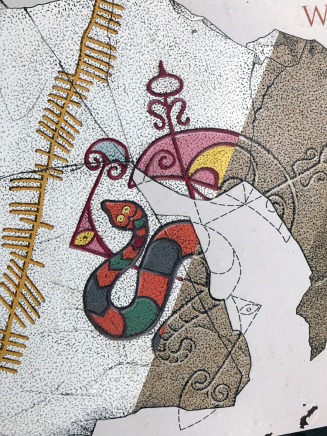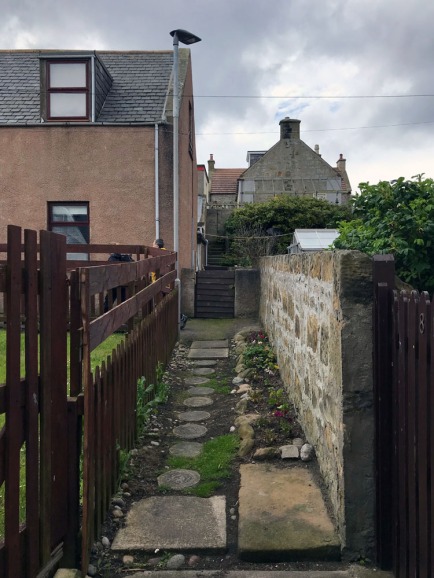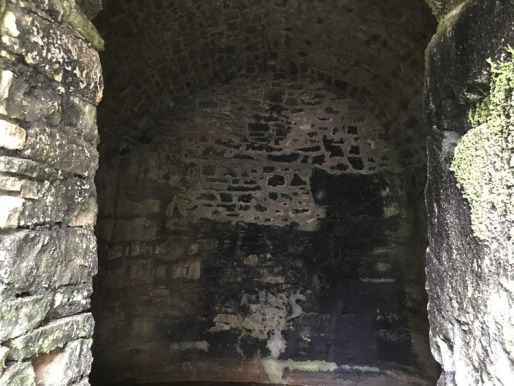
The Moray Firth is vast, wild and beautiful. Examined on a map it resembles a child’s geometry exercise in triangles, with the coast between its ‘origin’ at Inverness and far-away Fraserburgh being a virtually flat west-east baseline. From Fraserburgh the great inlet of the Moray Firth reaches northwards into the North Sea. The final line in the triangle, from Inverness moving north-east, ends at the tip of Scotland: John o’ Groats.

Our huge geographic triangle pivots around Inverness -which is also the place where Loch Ness meets the sea. What we know as Loch Ness today is the result of the shearing of two vast tectonic plates four-hundred million years ago. This geological event produced a ‘line’ of fracture that is now the line of Loch Ness but runs further across the entire width of Scotland and beyond. The east-west depression is known as the Great Glen.

If you are sensitive to ancientness, when you stand on this, the south coast of the Moray Firth, you can feel the immense age of this beautiful place – and its importance in Scotland’s history.

The mysterious race known as the Picts, did just that… and they built what would be in our terms a mighty city. Today, the small town that grew in its ruins is known as Burghead.

When we arrived we knew nothing of the above history. Dean (who had made a mysterious stop at one of the shops in the small high street) had arranged to take us through a warren of passageways to get to the famous and mysterious well.

Another turn and we approached our goal. It’s worth showing an edited copy of the Historic Scotland’s schematic. This pinpoints exactly where we now were in terms of the old fort…

We stood before the wooden fence reading the Historic Scotland information boards. The Burghead Well is kept locked but Dean had collected the key from one of buildings in the main street. About to enter, we were surprised when a visiting family arrived and said they believed that he had the key! Graciously, we stood back while they added to their holiday enjoyment. They soon returned and we entered the strange space in what looked like a large garden with a depression in the middle…

” An old man suggested that they should dig in a certain spot, where, according to immemorial tradition, a well would be found”
Gentlemen’s Magazine, 1828

The well-chamber is accessed by a descent of twenty rock-cut steps. The entire structure was hewn out of the local rock. The chamber is square, with rounded corners; and measures 5m by 5m. In the centre of the chamber is a pool surrounded by a narrow ledge 0.9m wide. The well pool is 1.3m deep. It was once emptied for maintenance and took six days to refill.

Burghead Well is described as a ‘Pictish puzzle’
It is not known when Burghead Well was constructed, nor why. As we have seen from the schematic, it lies on the rampart line of the inner Pictish fort – built between the 4th and 6th centuries AD. The well may not have been part of the fort’s design. The well could have been added later or it could be even older than the ramparts themselves.

The well could be considered as a water supply for the Pictish fort, but a shaft would be of more practical use. The rock-cut chamber is 5m wide and contains a 1m deep pool which is fed by a spring.
The act of descending into the earth is likely to have had spiritual significance – as mirrored in the Greek myth of Persephone and Hecate.
Different explanations have been put forward. These include a ritual drowning pool, a shrine to Celtic water deities or perhaps an early Christian baptistery.

Then Sue suggested something profound….
After so much buildup, the actual water looked, for want of a better word, ‘sad’. Everyone spent a quiet moment taking in the age and cultural Pictish significance of this very special place. With a collective heavy heart, we began to move back up the rock steps… Then Sue stole the moment and suggested that we do some of our chants…
Music and chanting have been part of sacred practices for as long as man gazed in wonder at the stars and the sunrise. Over the years we have developed a set of chants that come under the general heading of ‘vowel sounds’. Stuart suggested a combination we had used before; one ending in the powerful ‘Awen’ sound.
Structures – particularly stone structures – have resonant frequencies. On a few notable occasions, such as when visiting the West Kennet barrow, just outside Avebury, we have been amazed and delighted when the artefact in which we were chanting ‘came alive’ and appeared to sing with us.
The Burghead Well did the same. In a second of incredible transformation the beautiful but neglected stone chamber began to ring with the human voice and to speak to us. It spoke of water, of the power of water, of the home of water. It spoke of the journey we were making from the element of earth to that of water, and everyone present left that beautiful and hallowed place in a state of deep reflection…

We may not have ‘connected’ with the ancient Picts, but we certain did so with what they left behind…
The morning was still not finished. Before we had our long-awaited lunch at the Findhorn Bakery, another laying-out of our water-oriented pentagrams was to be made on Findhorn Beach… or was it?
In passing, though not part of our agenda, it is worth noting that Burghead connects with its past in a very special way. It is the only Scottish town that still carries out the ceremony of the ‘Burning of the Clavie’ – the origins of which are lost in history. This takes place on the ‘old new year’ date of January 11th, unless that is a Sunday, in which case the 12th is used, instead.

CC BY-SA 2.0
https://en.wikipedia.org/wiki/Burning_of_the_Clavie
Elders of the town carry a flaming ‘Clavie’ – half of a cask filled with burning, inflammable materials and topped with tar – through the town. The procession ends at the ruins of an altar on the Pictish headland where the Clavie is made the centre of a ritual bonfire. When the originating Clavie finally falls apart, the people of the town rush forward to claim a piece of the still-burning material and take it back to ward evil from their homes…

The burning of the Clavie
CC BY-SA 2.0
https://en.wikipedia.org/wiki/Burning_of_the_Clavie
To be continued….
Other parts in this series
Part One, Part Two, This is Part Three
©Copyright Stephen Tanham
Stephen Tanham is a Director of the Silent Eye School of Consciousness, a not-for-profit teaching school of modern mysticism that helps people find a personal path to a deeper place within their internal and external lives.
The Silent Eye provides home-based, practical courses which are low-cost and personally supervised. The course materials and corresponding supervision are provided month by month without further commitment.
Steve’s personal blog, Sun in Gemini, is at stevetanham.wordpress.com.

Thank you, Sue x
Reblogged this on Stuart France.
Thank you, Stu x
Thank you!
What an incredible adventure and place. Full beyond measure with spirits of the ancient ones. And such great writing about it. I could feel the difference in temperature as we headed down to the well and the water source. How truly amazing! Great sharing. Thank you all, and Sue for thinking of the chanting. Sure brought out some great energies.
Thank you, Anne. It was an actual-packed weekend! x
I dream of a day when I can perhaps attend some of these great events that you all are fortunate enough to get to attend and participate in as well as orchestrating them. Just fantastic!!!
Thank you, Anne. We hope so, too! x